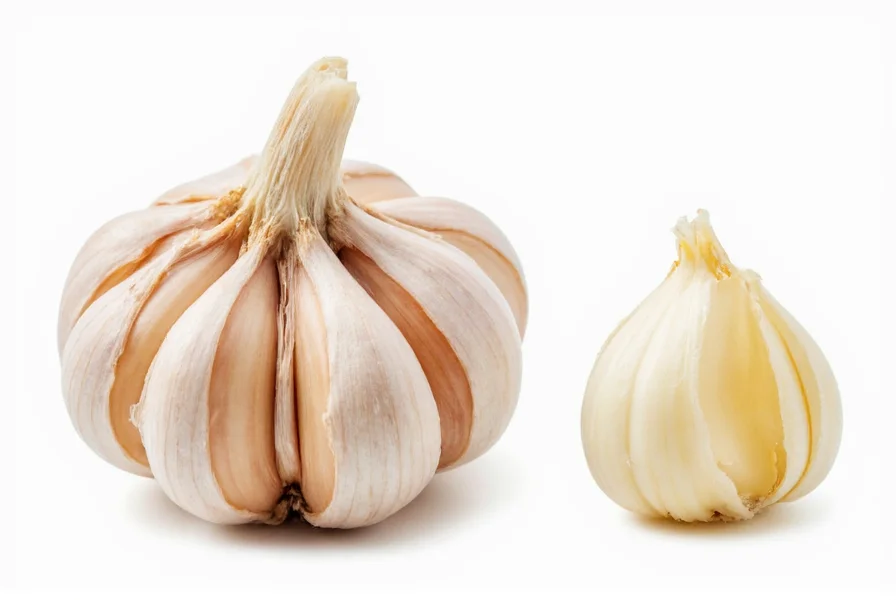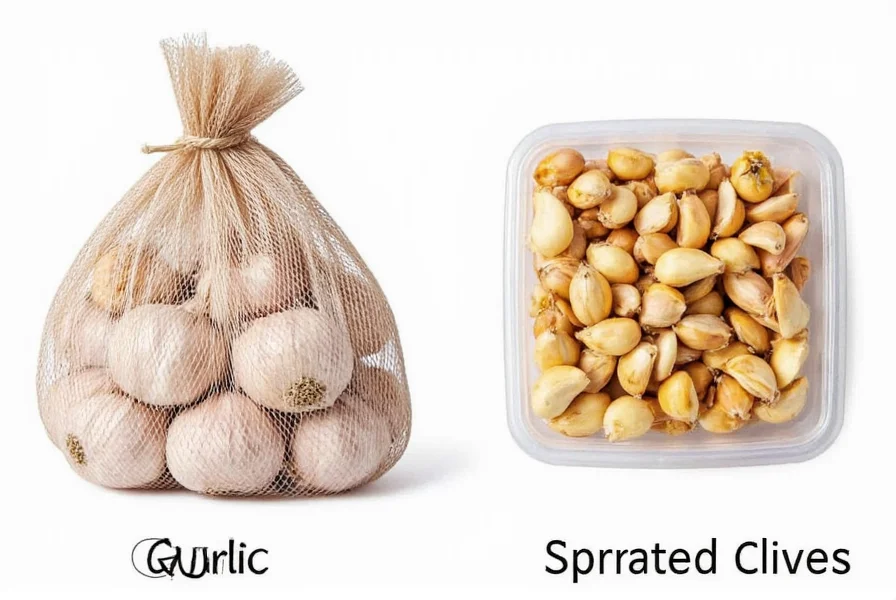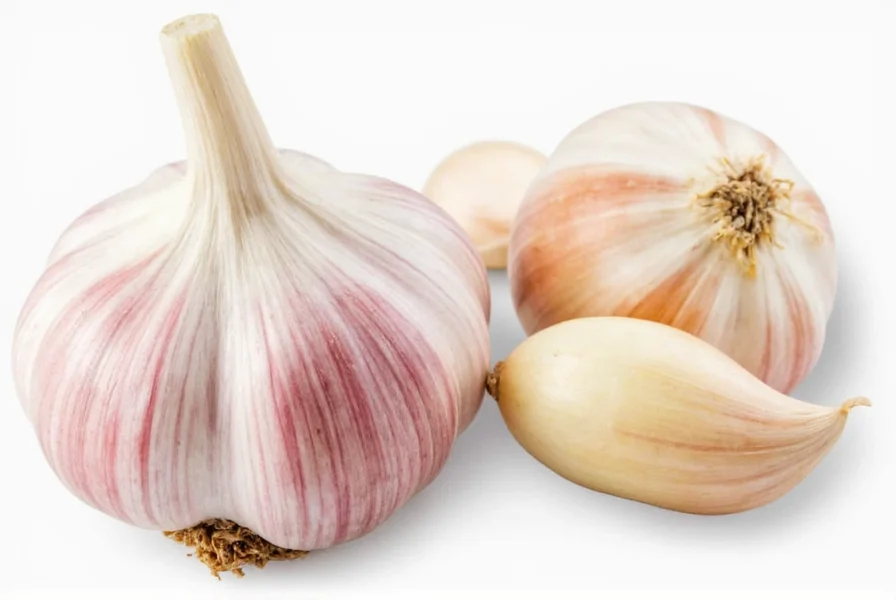When following recipes, confusion between garlic bulbs and cloves can dramatically alter flavor profiles. Many home cooks mistakenly use an entire bulb when a recipe calls for a single clove, resulting in overpowering garlic flavor. This guide clarifies the structural, culinary, and measurement differences between these two forms of garlic to help you achieve perfect results in your cooking.
Anatomy of Garlic: Bulb vs Clove
Garlic (Allium sativum) grows as a bulb underground, consisting of multiple individual cloves arranged in a circular pattern around a central stem. The entire structure, covered by a dry, papery outer skin, is what we call a garlic bulb or head. When you peel back this outer layer, you reveal the individual cloves - each with its own thin, protective skin.

Measurement Conversions for Cooking
Understanding garlic bulb vs clove measurements is crucial for recipe accuracy. The number of cloves per bulb varies by garlic variety and size:
| Garlic Bulb Size | Average Cloves per Bulb | Approximate Weight | Equivalent Minced Garlic |
|---|---|---|---|
| Small bulb | 8-10 cloves | 1.5-2 oz (40-60g) | 1.5-2 tablespoons |
| Medium bulb | 10-14 cloves | 2-3 oz (60-85g) | 2-3 tablespoons |
| Large bulb | 15-20+ cloves | 3-4 oz (85-115g) | 3-4 tablespoons |
Culinary Applications: When to Use Which Form
The choice between using a whole garlic bulb versus individual cloves significantly impacts flavor development in cooking. Understanding garlic bulb measurement conversion helps prevent recipe disasters.
Whole bulb applications:
- Roasting whole bulbs creates sweet, mellow garlic paste
- Preserving in oil (with proper food safety precautions)
- Creating garlic-infused dishes where subtle flavor is desired
Individual cloves applications:
- Sautéing for immediate flavor release
- Mincing for even distribution in sauces and dressings
- Using in precise measurements for consistent results
Storage Differences Between Bulbs and Cloves
Proper storage extends garlic's shelf life significantly. The storage requirements differ between intact bulbs and separated cloves:
- Whole bulbs maintain freshness for 3-6 months when stored in a cool, dark, well-ventilated place
- Separated cloves (still in skin) last 2-3 weeks under the same conditions
- Peeled cloves should be used within 1-2 days or stored in olive oil in the refrigerator for up to 1 week
- Never refrigerate whole bulbs as cold temperatures trigger sprouting

Common Measurement Mistakes and Solutions
Many cooks struggle with how many cloves in a garlic bulb when adapting recipes. Here are practical solutions:
- When a recipe says "1 bulb," it typically means use the entire head - rare except in specific Mediterranean dishes
- "1 clove" refers to a single segment, not the whole bulb - this is the standard measurement
- For consistent flavor, use weight measurements: 1 average clove = 3-7 grams
- When substituting jarred minced garlic, remember 1/2 teaspoon = 1 fresh clove
Practical Substitution Guidance
Understanding garlic bulb vs clove conversion helps when you need to adapt recipes based on what you have available:
- If a recipe calls for 1 whole bulb but you only have individual cloves, use 10-15 cloves depending on size
- When using pre-peeled cloves, remember they lose potency faster than fresh cloves
- For roasted garlic applications, 1 whole medium bulb yields approximately 2 tablespoons of roasted paste
- Frozen garlic cloves maintain flavor well but become softer when thawed - best for cooked applications
FAQ: Garlic Bulb vs Clove Questions Answered
How many cloves are typically in one garlic bulb?
A standard garlic bulb contains between 10-20 individual cloves, with medium-sized bulbs typically having 10-14 cloves. The exact number varies by garlic variety, growing conditions, and bulb size. Elephant garlic, despite its name, actually has fewer but much larger cloves per bulb.
Can I substitute a whole garlic bulb for individual cloves in recipes?
Generally no - substituting an entire bulb for a single clove will create overwhelmingly strong garlic flavor. Most recipes specifying "garlic" without clarification mean individual cloves. If a recipe genuinely requires a whole bulb (uncommon), it will typically specify "one whole head of garlic" or similar wording.
What's the weight equivalent of one garlic clove?
A single medium garlic clove weighs approximately 4-7 grams (0.14-0.25 ounces) with skin, or 3-5 grams (0.1-0.18 ounces) when peeled. For recipe accuracy, especially in baking or precise sauces, weighing cloves provides more consistent results than counting.
Why do some recipes specify "garlic bulb" instead of cloves?
Recipes specifying "garlic bulb" typically intend for you to use the entire head, usually for roasting or slow-cooking applications where the garlic becomes sweet and mellow. This is common in Mediterranean cuisine. Always check the context - if the recipe mentions roasting or slow cooking, it likely means the whole bulb; otherwise, it probably means individual cloves.
Does the number of cloves in a bulb affect flavor intensity?
Yes, bulbs with more cloves (typically smaller cloves) often have milder flavor than bulbs with fewer, larger cloves which tend to be more pungent. However, flavor intensity is more significantly affected by garlic variety, growing conditions, and freshness. Hardneck varieties generally have fewer, larger cloves with more complex flavor than softneck varieties.











 浙公网安备
33010002000092号
浙公网安备
33010002000092号 浙B2-20120091-4
浙B2-20120091-4